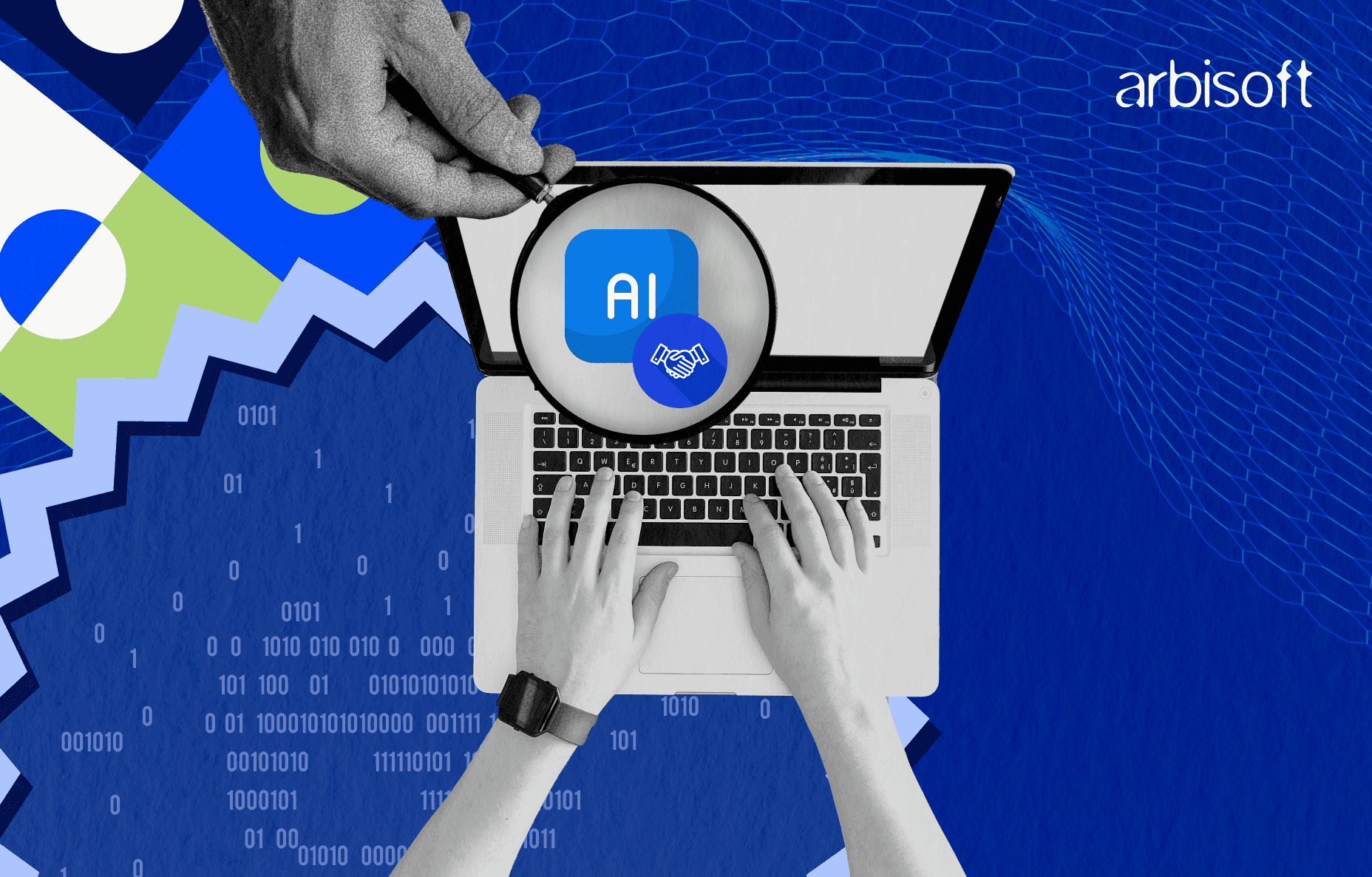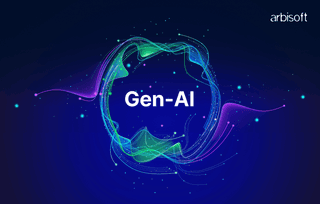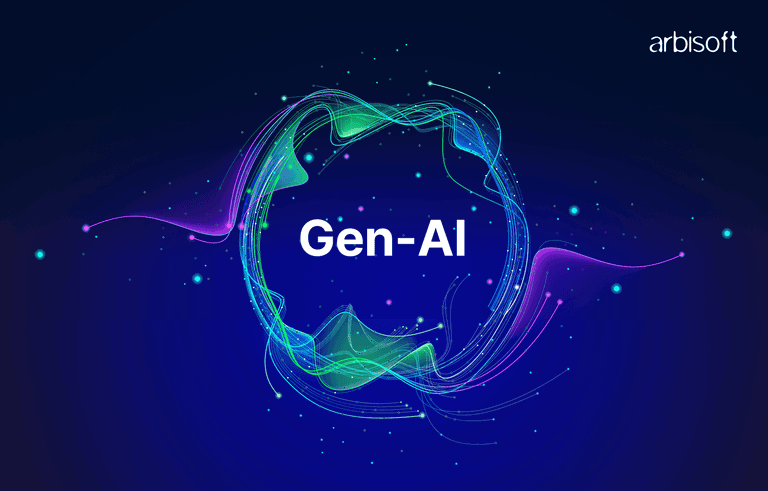We put excellence, value and quality above all - and it shows




A Technology Partnership That Goes Beyond Code

“Arbisoft has been my most trusted technology partner for now over 15 years. Arbisoft has very unique methods of recruiting and training, and the results demonstrate that. They have great teams, great positive attitudes and great communication.”
How to Find and Hire AI/ML Development Partners in 2025

If you're a startup founder racing against a six-month runway, juggling investor check-ins, and staring down a feature roadmap that’s already screaming "GenAI," you’re not alone.
In 2025, finding the right AI/ML development partner isn't just about writing code. It’s about de-risking delivery, moving fast without breaking things, and meeting security checklists before your next board call.
To understand how the hiring landscape has changed and what makes AI outsourcing companies essential today, let's start by unpacking the major hiring challenges founders are facing and walk you through what to look for in a partner who won’t just build, but build smart.
1. The 2025 AI/ML Hiring Landscape: Why Traditional Approaches Fail
Let’s understand what exactly is making traditional hiring so tough right now.
- Salaries for senior AI/ML engineers in the US have surged past $220,000, pricing out most early-stage startups
- Freelancer churn leads to unreliable delivery and lost knowledge
- In-house teams often lack experience with GenAI tools or secure MLOps pipelines
- Compliance and audit readiness add a heavy burden that many AI and ML engineers aren't equipped to handle
I’ve seen it first-hand: founders chasing GenAI dreams while competing with Big Tech salaries, freelancer churn, and dev shops that either overcharge or underdeliver.
Local hiring stalls because the top 1% of AI talent doesn’t respond to your job posts unless you are Google or Meta. Even if you land a hire, onboarding takes months you don’t have.
This is where many startups hit a wall.
So, how do you move forward when local hiring fails?
Market Dynamics Driving Outsourcing Decisions
That’s why outsourcing AI development isn’t a fallback in 2025. It’s a strategic move.
The best AI/ML development companies today operate like embedded pods. They plug into your sprints, share your timezone, and move with your sense of urgency.
You don’t just outsource development, you bring in momentum when and where you need it most.
2. Compliance-First Partner Evaluation: SOC 2 Type II and EU AI Act Requirements
With speed must come security. As investor scrutiny grows and regulations tighten, compliance becomes a central pillar of your partner evaluation.
Understanding SOC 2 Type II for AI Platforms
Security isn’t a nice-to-have. If you’re selling into mid-market firms or regulated verticals, you’ll need to clear SOC 2 Type II audits. Your AI partner must build with secure data pipelines, encrypted storage, audit trails, and least-privilege access models baked into their workflow.
EU AI Act Compliance Framework
Selling in the EU? You’ll also need partners fluent in the risk classifications under the EU AI Act. Ask if they have worked on high-risk use cases and how they handle bias mitigation, transparency, and human oversight mechanisms.
Vendor Compliance Verification Checklist
Before moving forward, use this checklist to avoid surprises down the line:
- Can they share past audit reports or Type I readiness documentation?
- Do they use internal compliance officers or rely on external consultants?
- What tooling do they use for automated monitoring and documentation?
3. Geographic and Cost Optimization: The Near-Shore Advantage
Once compliance is accounted for, geography and cost become the next puzzle pieces. Time zones matter. So does your hourly rate.
Near-Shore LatAm vs. GDPR-Compliant South-Asia Teams
If you need PST overlap, LatAm makes sense, but expect higher rates. If you are compliance-minded and budget-sensitive, consider a GDPR-compliant South-Asian AI development partner like Arbisoft, who have data localization experience and ISO 27001 certification.
Achieving the ≤95/Hour Blended Rate Target
In 2025, the magic number for cost-performance is a blended $85 to $95 per hour across the team. This gives you mid-senior AI/ML engineers with GenAI exposure, senior DevOps, and QA baked into every sprint.
PST Overlap Requirements and Productivity Metrics
Productivity isn’t just about working hours. You want overlap, yes, but also sprint metrics, QA pass rates, and fast turnaround on bugs.
4. The 30-60 Day SOW Timeline: Accelerated Evaluation Framework
So, how do you actually find and vet the right team fast?
Let’s map out a realistic 6-week partner evaluation timeline that helps you make confident, data-backed decisions quickly.
Week 1-2: Rapid Screening and Initial Assessment
Start with 3 vendors. Evaluate their case studies, time zone overlap, and security maturity. Jump on intro calls and get a feel for their communication culture.
Week 3-4: Deep Technical and Compliance Validation
This is where the rubber meets the road. Assign a paid test sprint. Evaluate their CI/CD maturity, Git hygiene, code reviews, and how they handle infra as code. Bonus if they bring a security engineer to your demo.
Week 5-6: Reference Validation and Contract Negotiation
Don't skip this part. Talk to 2 past clients. Focus on timelines, downtime, and post-launch support. Negotiate a fixed-bid pilot with sprint-level reporting.
5. Technical Evaluation Criteria: Beyond Basic Development Skills
Not all dev teams are built equal-especially when it comes to GenAI. Here's what to look for.
GenAI-Specific Competencies
Your partner should have shipped apps with LangChain, OpenAI, HuggingFace, or private LLMs. Ask how they fine-tune models and handle inference costs.
Infrastructure and Deployment Excellence
Can they deploy with Kubernetes or managed services? Are they Terraform-literate? Can they demonstrate blue/green deployments?
Risk Management and Security Integration
SOC 2 isn’t a phase. It’s a mindset. From day one, they should implement role-based access, endpoint monitoring, and secrets management.
6. ROI Calculation Framework: Building Your Board-Ready Business Case
Numbers speak louder than promises. Here’s how to build a business case that will win over your board.
Inference Cost Optimization Metrics
Track per-query costs, caching strategies, and GPU usage. Your partner should demonstrate how they optimize for both speed and spend.
Velocity and Time-to-Market Calculations
Quantify how quickly they can help you ship pilot workflows. Use Gantt charts to show feature velocity. Each demo should support a funding milestone.
Total Cost of Ownership Analysis
Remember, cheapest isn’t always best. Include post-launch support, DevOps services, compliance tooling, and infra scaling in your analysis.
7. Partner Sourcing Strategy: From LinkedIn to SOW
Let’s talk sourcing. How do you build a smart and short list without getting overwhelmed?
Leveraging LinkedIn Peer Referrals Effectively
Your best leads are peers who’ve launched similar products. DM 10 product leaders who’ve launched GenAI tools and ask who they partnered with.
Gartner Peer Insights and Industry Resources
Don’t rely on vendor rankings alone. Look at reviews from companies similar to yours. Pay close attention to those who launched under tight timelines.
Building Your Shortlist: The Three-Vendor Rule
Diversity of options helps sharpen your decision-making. Always evaluate at least three. One from LatAm, one from South Asia, and one boutique US firm. Compare proposals on price, compliance, and data and AI services maturity.
8. Negotiation and Contract Optimization
Now you’ve found your match. Let’s make sure the contract sets you up for success.
Shared-IP Terms and Technology Transfer
Ensure all IP, models, and infra setups will transfer to you. Add clauses that prevent reuse with competitors.
Sprint-Level Performance Metrics and SLAs
Tie payments to sprint outcomes. Use burnup charts, QA services coverage, and uptime goals to define delivery quality.
Scaling and Maintenance Provisions
Look ahead. Clarify who owns scale-up. Will they help onboard your future in-house team? What’s their response time for P1 incidents?
9. Conclusion: From Evaluation to Implementation Success
At the end of the day, you’re not just hiring AI developers, you are choosing partners in speed, security, and success.
You don’t just need a vendor. You need a crew that shows up like a co-founder-fast, sharp, and fluent in risk.In 2025, choosing the right AI/ML development partner could be the difference between your Series A pitch getting ghosted or getting oversubscribed.
Start lean. Evaluate fast. Build smart. And if every sprint can double as a slide in your next investor deck, you’re on the right track.
FAQs: Hiring AI/ML Development Partners in 2025
Still got questions? You’re not alone. These are the things most founders ask me when they start hunting for their AI dream team. Let’s break them down in plain, no-fluff answers.
How much does an AI consultant cost?
It depends on where you're looking and what you're building. In 2025, you’ll see a range between $100 and $300 per hour. If you’re hiring for a complete MVP, plan for anywhere from $50K to $150K.
Where to hire AI experts?
Start with your network. LinkedIn peer referrals are gold. If that’s dry, head to Clutch, Gartner, or niche tech communities. Just steer clear of low-cost freelance platforms if you care about quality and deadlines.
What is an AI development company?
Think of it as your outsourced R&D team. They build and train machine learning models, fine-tune LLMs, and deploy AI features into your product so it’s not just smart, but secure and scalable too.
How much does it cost to hire an AI specialist?
If you're hiring in-house in the US, brace for $220K or more per year. If that’s out of range, go with a lean outsourced team that brings deep AI experience at a blended hourly rate.
What are machine learning services?
They include model design, training, tuning, testing, and deploying into production. It's also common to get dashboards, reporting pipelines, or real-time ML ops baked in.
What does an AI company do?
They help businesses use AI to automate, predict, or personalize experiences. Some build full products, others just train and tune models. The good ones help you tie AI to real business outcomes.
What are AI and ML skills?
Beyond just Python, these include data wrangling, statistics, neural networks, NLP, computer vision, and a strong grip on tools like PyTorch, TensorFlow, and cloud ML solutions.
How does AI development work?
You start with a problem, gather good data, train and test your model, and then deploy it into your stack. After that, it’s about monitoring performance and continuously improving it.
What is the difference between AI and ML?
AI is the umbrella term. It’s the big picture idea of machines doing smart things. ML is the engine under the hood. It’s how we train systems to learn patterns and make decisions.
Which company is best for AI ML?
It’s less about the logo, more about the fit. You want a team that’s launched something like what you’re building, understands your market, and can work within your compliance and budget boundaries.
What is AI and outsourcing?
It means teaming up with experts outside your company to build AI systems faster and cheaper. Instead of spending months hiring, you tap into proven teams who’ve done it before.
How much does it cost to hire a Machine Learning Engineer?
Expect to pay $200K+ per year for senior ML engineers in the US. That’s why startups often prefer a fractional or outsourced setup with rates around $90 to $120 per hour for strong talent.
























